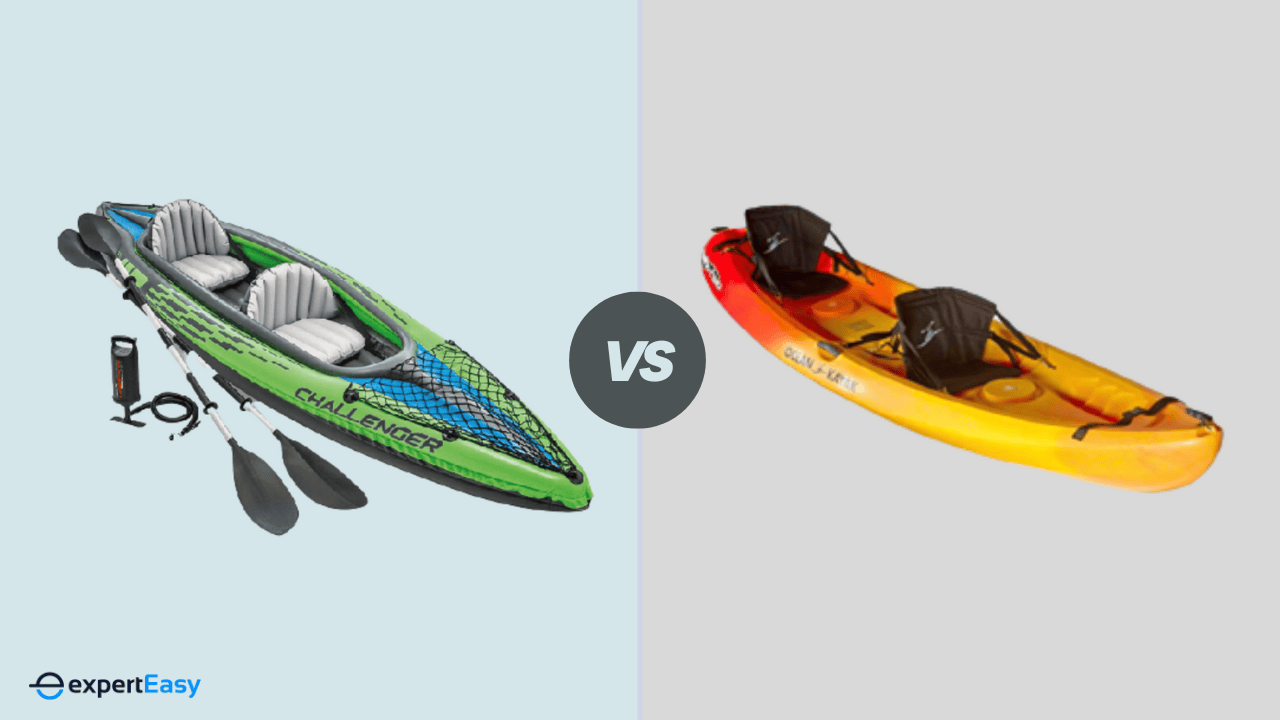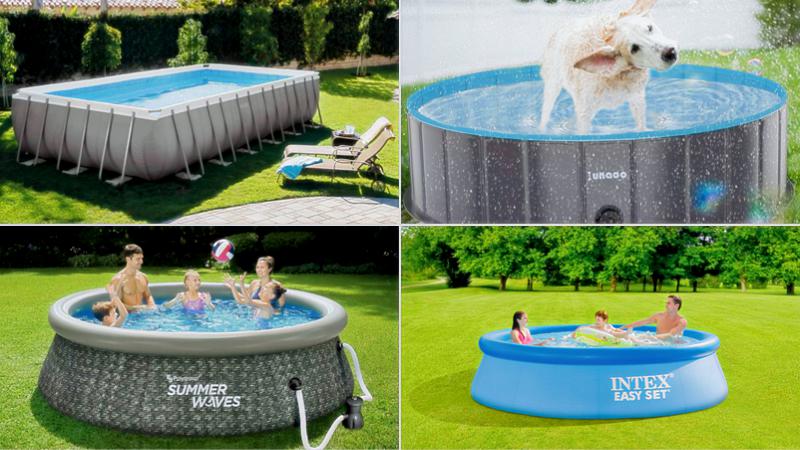A kayak is a small water vessel with two-bladed pedals that propel it forward. Traditional kayaks have a cockpit that can accommodate one paddler. Sometimes, this cockpit has a water-resistant spray deck that shields it from water and prevents water from entering.
Kayaks have seen enhancements over the years, with the addition of automatic propulsion systems such as engines, electric motors, and so on. One such innovation is the inflatable kayak. How do they differ from hard-shell kayaks? We explore this in the following sections.
What is an Inflatable Kayak?

Inflatable kayaks are constructed using a wide range of materials. They have two assembly methods: the first involves inserting air-filled tubes, similar to the process with a bicycle tyre, and the other involves using airtight material directly inflated with air, similar to a tubeless tyre.
Inflatable kayaks are durable and can stay afloat on the water for a long. They are also much lighter, weighing an average of 13 kg.
Reasons to buy
- Handles more weight
- Lightweight and portable
- Easy for one person
- Affordable for beginners
- Simple to transport
Reasons to avoid
- Shorter lifespan
- Difficult to repair
- Prone to punctures
What is a Hardshell Kayak?

Hard-shell Kayaks are built from an amalgam of substances, including wood plastic, wood, fibreglass, and other materials such as Kevlar. They are generally heavy and weigh around 25 kg.
The outer layer of the kayak is covered by a coloured gel coating, which forms the surface layer. This covering protects it while also enhancing its beauty. The plastic and fibreglass used are specialised to provide extra protection and safety and prevent the Kayak from becoming too heavy.
Reasons to buy
- Safer than inflatable kayaks
- Withstands strong water currents
- Excellent manoeuvrability in rapids
- Less prone to weathering
- Long-term investment
Reasons to avoid
- Heavy and hard to carry
- Not foldable, needs space
- Expensive
Inflatable vs Hardshell Kayaks

The most widely used kayaks are inflatable and hard-shell. The difference between them is their physical makeup. Inflatables are made of durable and strong PVC-based material, while hard shells are made of rotomolded plastic.
An inflatable kayak has chambers that hold air inside to keep it buoyant. The kayak is more durable if these chambers are constructed with drop-stitch technology. Still, inflatable kayaks are not as rigid or long-lasting as hard shells, making them difficult to control in choppy water.
On the other hand, hard-shell kayaks have many features that inflatable kayaks do not, such as rigid construction, which makes them much easier to manoeuvre in choppy water. Interestingly, they are also lighter because they do not have the same inner chambers as inflatable kayaks.

Final Thoughts
With this knowledge about the properties, advantages and disadvantages, and differences between inflatable and hard-shell kayaks, you should easily decide which one to purchase for your next adventure.
Hardshell kayaks are safer and more durable than inflatable kayaks. They offer an excellent outdoor experience, but you may choose inflatable kayaks for their comfort, ease of use, and portability.








